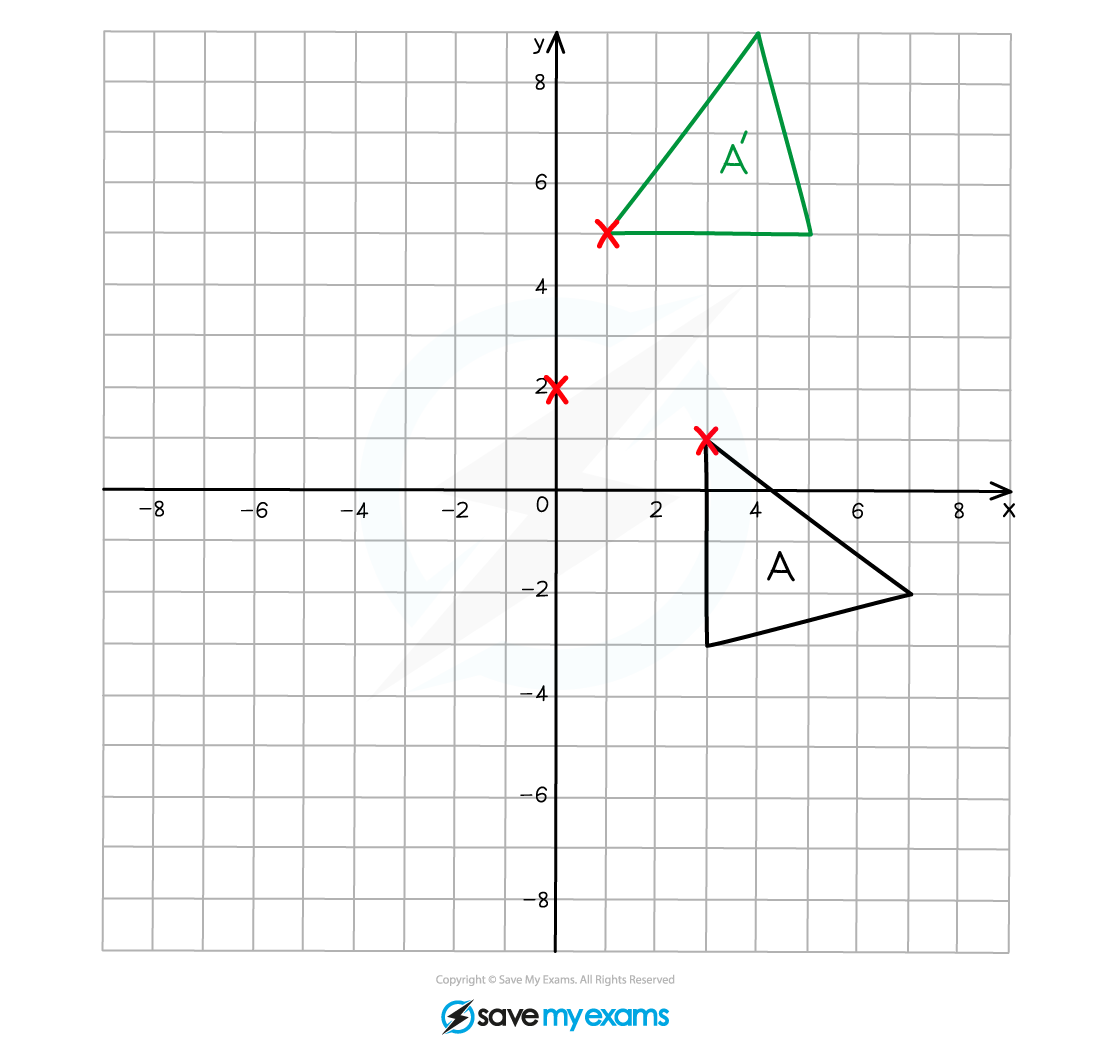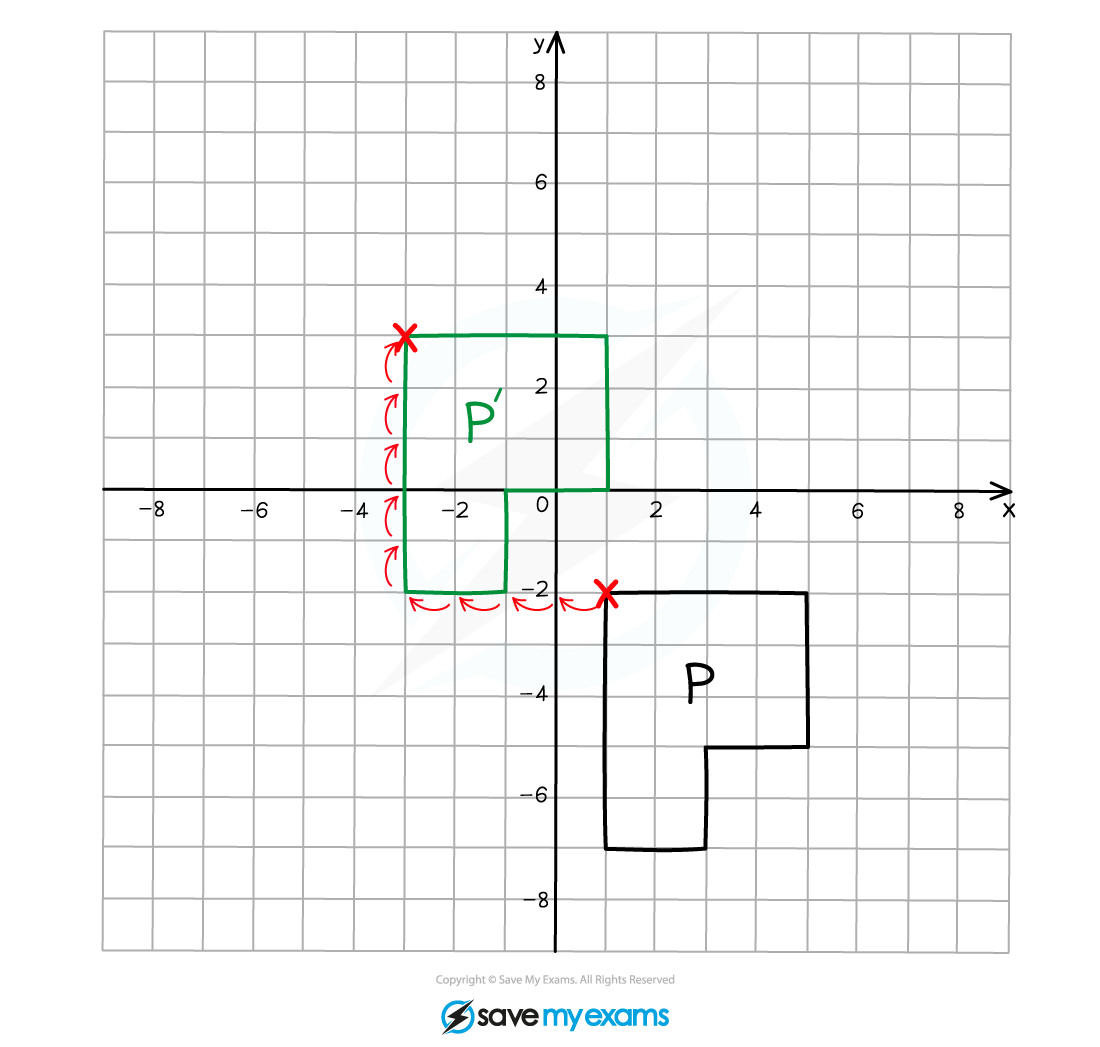Combination of Transformations (Edexcel IGCSE Maths A (Modular)): Revision Note
Exam code: 4XMAF/4XMAH
Combination of transformations
What do I need to know about combined transformations?
Combined transformations are when more than one transformation is performed, one after the other
In many cases, two transformations can be equivalent to one alternative single transformation
Finding this single transformation is a common exam question
Rotation
Requires an angle, direction and centre of rotation
It is usually easy to tell the angle from the orientation of the image
You can use trial and error and tracing paper to find the centre of enlargement

Reflection
A reflection will be in a mirror line which can be vertical (x = k), horizontal (y = k) or diagonal (y = mx + c)
Points on the mirror line do not move
It is possible for a mirror line to pass through the object

Translation
A translation is a movement which does not change the orientation or size of the shape, it simply moves location
A translation is described by a vector in the form
This represents a movement of x units to the right and y units vertically upwards

What are common combinations of transformations?
A combination of two reflections can be the same as a single rotation
One reflection using the line
and the other using the line
This is the same as a 180° rotation about the centre
The order of the combination can be important to the overall effect
A reflection in the line y = x followed by a reflection in the x-axis is the same as a 90° rotation clockwise about the origin
A reflection in the x-axis followed by a reflection in the line y = x is the same as a 90° rotation anticlockwise about the origin
How do I undo a transformation to get back to the original shape?
After transforming shape A to make shape B you could be asked to describe the transformation that maps B to A
Transformation from A to B | Transformation from B to A |
|---|---|
Translation by vector | Translation by vector |
Reflection in a given line | Reflection in the same line |
Rotation by θ° in a direction about the centre | Rotation by θ° in the opposite direction about the centre |
Enlargement of scale factor | Enlargement of scale factor |
Worked Example
(a) On the grid below rotate shape F by 180o using the origin as the centre of rotation.
Label this shape F'.

Answer:
Using tracing paper, draw over the original object then place your pencil on the origin and rotate the tracing paper by 180o
Mark the position of the rotated image onto the coordinate grid
Label the rotated image F'

(b) Reflect shape F' in the line . Label this shape F''.
Answer:
The line is the
-axis
Measure the perpendicular distance (the vertical distance) between each vertex on the original object and the -axis, then measure the same distance on the other side of the mirror line and mark on the corresponding vertex on the reflected image
Repeat this for all of the vertices and join them together to create the reflected image
Label the reflected image F''

(c) Fully describe the single transformation that would create shape F'' from shape F.
Answer:
The object (F) and image (F'') are reflections of each other in the -axis

The single transformation from F to F'' is a reflection in the y-axis
Stating "the y-axis" or writing equation are both acceptable

Unlock more, it's free!
Did this page help you?